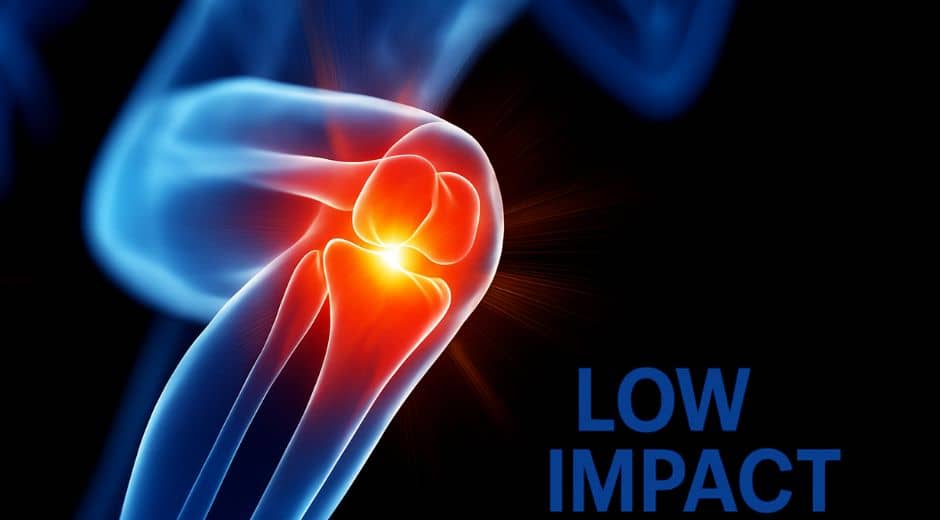The Power of Recovery: How Rest Shapes Long-Term Fitness Success
Every fitness journey celebrates action—the workouts, the sweat, the visible effort. Yet the real magic of progress often happens in the quiet moments that follow. Recovery is where the body rebuilds, strengthens, and adapts. Without proper rest, no training program, no matter how well-designed, can deliver lasting results.
Recovery is not laziness or weakness. It’s an active and essential part of growth. Muscles don’t get stronger during workouts; they get stronger between them. The nervous system, hormones, and tissues all depend on recovery time to restore balance. True fitness requires as much attention to recovery as to exercise itself.
When recovery is ignored, progress stalls. Fatigue builds, motivation fades, and the risk of injury increases. But when recovery is respected, energy returns, performance improves, and longevity becomes possible.
Understanding What Recovery Really Means
Recovery refers to the body’s process of repairing itself after physical activity. During exercise, muscles experience small tears, energy stores deplete, and stress hormones rise. Recovery allows the body to repair those microtears, replenish glycogen, and rebalance the nervous system.
This process is not limited to the muscles. It includes the cardiovascular, immune, and endocrine systems as well. Proper recovery strengthens the entire body’s capacity to handle future challenges. It’s the foundation that makes consistent training possible without burnout.
According to Harvard Health Publishing, structured rest improves performance, reduces inflammation, and supports mental clarity. Recovery is as scientific as it is intuitive—your body is designed to rebuild, but it needs time and resources to do so.
The Biological Science Behind Recovery
When you exercise, your body enters a state of controlled stress. Heart rate increases, muscles work harder, and the brain signals the release of hormones like cortisol and adrenaline. These responses help you perform but also exhaust internal reserves.
Afterward, the body activates a different system: the parasympathetic nervous system. This is sometimes called the “rest and digest” mode. It slows the heart rate, stimulates tissue repair, and releases growth hormones that rebuild muscle fibers.
During deep sleep, this process accelerates. Human growth hormone (HGH) levels peak, helping regenerate muscle and connective tissue. That’s why high-quality sleep is considered the single most important recovery tool.
Recovery is not passive; it’s an intelligent adaptation mechanism. Your body is constantly working behind the scenes to heal, strengthen, and prepare you for what comes next.
Types of Recovery
There are two main types of recovery: active and passive. Both are essential to a balanced fitness plan.
Active recovery involves low-intensity activities that increase circulation without straining the muscles. Examples include walking, light yoga, or gentle swimming. These movements help flush out metabolic waste and reduce stiffness.
Passive recovery is full rest—no physical exertion, just relaxation. This allows complete restoration of muscles and energy systems. Passive recovery is crucial after intense training or competition, when the body’s resources are significantly taxed.
A successful athlete, or anyone who trains regularly, learns to balance both. Rest days are not breaks from discipline but part of discipline itself.
Signs You’re Not Recovering Enough
Even dedicated fitness enthusiasts can fall into the trap of overtraining. The signs often appear subtly at first but can quickly lead to setbacks if ignored.
Common indicators include:
Constant fatigue or low energy despite adequate sleep
Persistent muscle soreness or joint pain
Decline in performance or motivation
Irritability, mood swings, or difficulty concentrating
Weakened immunity or frequent illness
When these symptoms appear, the body is signaling the need for recovery. Ignoring these messages can lead to burnout or injury, undermining progress that took months to build.
The Role of Nutrition in Recovery
What you eat after a workout can be as important as the workout itself. Nutrition fuels the repair process, replenishes energy stores, and reduces inflammation.
Protein provides amino acids that rebuild muscle tissue. Carbohydrates restore glycogen levels, which are the body’s main source of training fuel. Healthy fats support hormone production and reduce systemic inflammation.
Ideal post-workout meals might include grilled chicken with quinoa and vegetables, a smoothie with protein and berries, or salmon with sweet potato. Hydration is equally critical—muscles need water and electrolytes to function efficiently.
For optimal recovery, aim to eat a balanced meal within two hours after intense exercise. Consistency in nutrition accelerates adaptation and helps the body sustain long-term fitness.
The Importance of Sleep
Sleep is the ultimate recovery tool. While you rest, the body performs countless repair functions. Muscle tissue regenerates, memory consolidates, and stress hormones decrease. Poor sleep disrupts this cycle, delaying recovery and impairing physical and cognitive performance.
Adults typically need between seven and nine hours of quality sleep per night. For athletes or those in demanding training cycles, slightly more may be necessary.
Creating a nighttime routine helps signal the body to unwind:
Keep a consistent bedtime schedule
Avoid screens for at least thirty minutes before bed
Maintain a dark, cool sleeping environment
Practice light stretching or deep breathing before sleep
Quality rest not only boosts recovery but also enhances motivation and emotional stability.
Active Recovery Techniques
Incorporating active recovery into your weekly routine keeps the body flexible and reduces the risk of injury. Simple strategies include:
Gentle movement: Take a relaxed walk, swim, or bike ride to encourage circulation.
Stretching and mobility work: Focus on flexibility and range of motion.
Foam rolling or massage: Release muscle tension and improve blood flow.
Yoga or Pilates: Enhance balance, posture, and controlled breathing.
Breathwork: Oxygen supports cellular repair and calms the nervous system.
These activities promote recovery while keeping you connected to your fitness mindset.
Mental and Emotional Recovery
Recovery is not purely physical. Mental and emotional rest are equally important. Fitness can sometimes become a source of pressure rather than joy, especially when goals are ambitious. Taking time to relax the mind prevents burnout and renews enthusiasm.
Mindful breathing, meditation, journaling, and spending time outdoors are simple yet effective tools. They help quiet the inner critic, release tension, and reset perspective.
Recovery is also a reminder to celebrate progress. Acknowledging small wins builds confidence and keeps motivation sustainable.
As discussed in BodyWellnessGroup.com’s Mindfulness section, mental recovery fuels physical strength. When the mind is centered, the body follows with energy and focus.
How Recovery Enhances Performance
It might seem counterintuitive, but resting more can actually make you stronger and faster. When recovery is prioritized, muscles adapt more effectively to training stress. Over time, this leads to improved endurance, power, and coordination.
Recovery also sharpens focus. With sufficient rest, workouts feel more efficient, and progress becomes measurable. The brain processes movement patterns better, improving form and reducing the risk of injury.
This principle is known as the “supercompensation effect.” After training, performance temporarily dips as fatigue sets in. During recovery, the body overcompensates by strengthening beyond its previous state. Skipping rest short-circuits this powerful mechanism.
The Role of Stress Management
Chronic stress, whether physical or emotional, interferes with recovery. Elevated cortisol levels suppress immune function, slow muscle repair, and reduce energy availability.
Incorporating relaxation practices into your daily routine can counteract this effect. Activities like deep breathing, time in nature, or listening to calming music promote a balanced nervous system.
Stress management is not separate from recovery—it’s a pillar of it. By lowering overall stress, you make room for the body to do what it does best: restore balance and strength.
The Power of Hydration in Recovery
Hydration plays a crucial role in every stage of recovery. Water supports nutrient transport, temperature regulation, and toxin removal. Dehydration slows down muscle repair and increases the risk of cramps or fatigue.
Electrolytes such as sodium, potassium, and magnesium are also essential. They maintain nerve function and fluid balance. After sweating, replacing these minerals helps speed up recovery and prevents dehydration symptoms.
Aim to drink water consistently throughout the day, not just during workouts. Herbal teas, fruits like watermelon, and coconut water are excellent hydrating choices.
Modern Tools and Recovery Technology
Recent advances in fitness science have introduced a variety of tools that enhance recovery efficiency. From massage guns to compression garments and cryotherapy, technology can accelerate repair when used wisely.
Massage guns help release muscle tension by improving blood circulation. Compression gear reduces swelling and speeds recovery by improving venous return. Cryotherapy and ice baths reduce inflammation and aid muscle repair after intense sessions.
While these tools can be effective, they work best when paired with basic recovery principles: sleep, nutrition, and rest. Technology can support recovery, but it cannot replace the fundamentals.
Common Recovery Mistakes
Many people unintentionally undermine their recovery efforts by following myths or habits that contradict the body’s needs. Common mistakes include:
Skipping rest days in pursuit of faster results
Eating too little or neglecting protein intake after training
Consuming excessive caffeine or alcohol, which dehydrate the body
Ignoring mobility and stretching
Staying mentally fixated on progress instead of allowing rest
Avoiding these pitfalls ensures that recovery remains a proactive and empowering part of your fitness strategy.
Creating a Personalized Recovery Plan
No two bodies recover the same way. Factors like age, nutrition, sleep quality, and training intensity all influence recovery time. Tracking how your body responds helps refine your approach.
Start by observing how you feel after each workout. Rate your energy, soreness, and motivation levels. Adjust intensity or rest days based on those signals.
You can also rotate focus areas—alternate between strength training, cardio, and mobility work to give specific muscle groups adequate time to recover.
Listening to your body is the most effective recovery plan there is. Fitness is not about pushing limits constantly but understanding when to pull back to move forward.
The Connection Between Recovery and Longevity
Long-term health depends on sustainable fitness habits. Overtraining might deliver short-term results but often leads to exhaustion and injury. Recovery, on the other hand, builds a foundation for lifelong vitality.
Regular rest supports hormonal balance, joint health, and mental focus. It keeps motivation alive and exercise enjoyable rather than punishing. A sustainable approach allows fitness to remain part of your life for decades, not just months.
As the saying goes, consistency beats intensity when it comes to true wellness.
Conclusion: Rest as a Form of Strength
Recovery is not a break from progress—it is progress. It transforms effort into strength, fatigue into resilience, and motion into mastery. The body’s ability to heal is one of its greatest powers, and honoring that process unlocks lasting fitness success.
By combining rest, nutrition, hydration, and mindfulness, you create a balanced cycle of growth. Each recovery day becomes an investment in long-term performance.
To learn more about fitness balance, nutrition strategies, and holistic wellness, visit BodyWellnessGroup.com for guides tailored to sustainable living.
For deeper insights into recovery science and professional athlete practices, explore Men’s Health, which offers evidence-based approaches to rest and regeneration.
And when you’re ready to take action toward smarter recovery, begin your next wellness step right here: BioNatureVista
The strongest athletes and healthiest people share one truth: they know when to rest. Recovery is the quiet power behind every achievement, the invisible work that builds lasting success.
Wellness Made Simple

Breathwork Basics You Can Use Anytime To Reset
Breathwork Basics You Can Use Anytime To Reset

Sleep Rhythm, Simple Night Habits For Deeper Rest
Sleep Rhythm, Simple Night Habits For Deeper Rest

The Meaning of Connection: Building a Purposeful and Fulfilling Lifestyle
Explore how genuine connection supports mental wellbeing, emotional health, and deeper purpose, shaping a more meaningful and fulfilling lifestyle.

Hydration Balance: How Water Shapes Energy, Digestion, and Daily Wellness
Learn how hydration balance fuels energy, supports digestion, and improves overall wellbeing through simple daily habits and smart nutrition strategies.

The Power of Grounding: Returning to Inner Stability in a Distracted World
Discover how grounding techniques calm the mind, reduce stress, and restore emotional stability in a fast paced, distraction filled world.

Mastering Mobility: The Overlooked Pillar of Long-Term Fitness Health
Discover why mobility is essential for strength, performance, and injury prevention, and learn how daily movement habits build a healthier, more resilient body.

The Meaning of Connection: Building a Purposeful and Fulfilling Lifestyle
Explore how genuine connection supports mental wellbeing, emotional health, and deeper purpose, shaping a more meaningful and fulfilling lifestyle.

The Power of Antioxidants: Defending Your Body from Within
Learn how antioxidants protect your cells, strengthen immunity, and support long-lasting vitality through simple, nutritious food choices.

Expanding Awareness: The Key to Emotional and Mental Freedom
Discover how cultivating awareness deepens emotional balance, clarity, and self-understanding, helping you live consciously every day.

The Power of Recovery: How Rest Shapes Long-Term Fitness Success
Discover why recovery is essential to performance, strength, and endurance, and learn how rest builds a foundation for sustainable fitness progress.

Conscious Living: Building a Lifestyle of Sustainability and Purpose
Explore how sustainable living nurtures both personal wellbeing and the planet, creating harmony through mindful habits and intentional choices.













